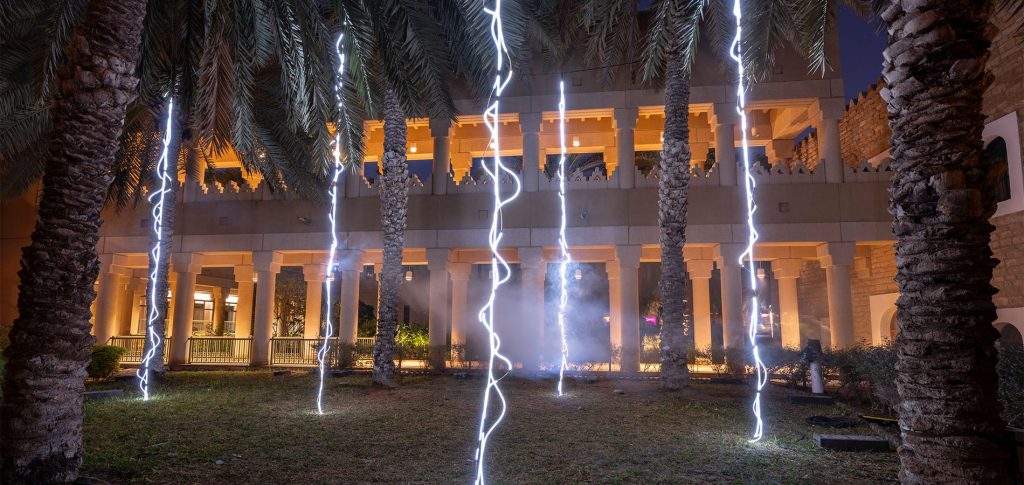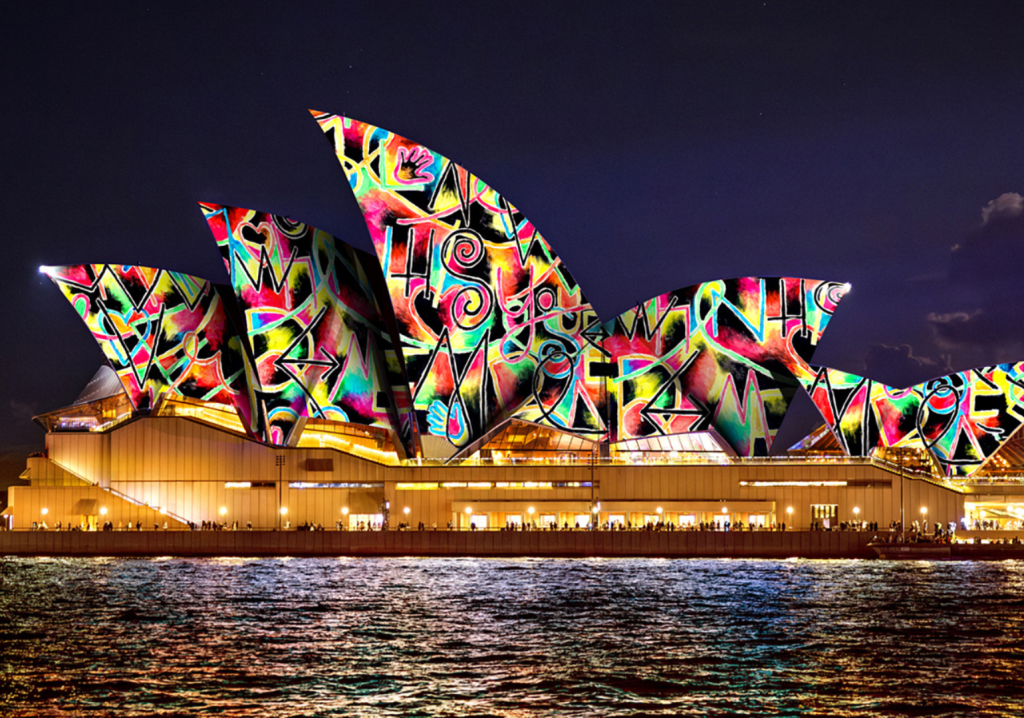The annual light festival is back, bigger and brighter than ever. But what many people don’t realise is the incredible light installations are a mix of engineering meets art.
For more than 15 years, Vivid Sydney has upped the ante on digital creativity and imaging innovation, showing how engineering and art can combine to delight millions.
Michael Hassett, founder and managing director of technology provider TDC, told create the process of bringing images to life is usually the other way around to what people might expect.
“The artists will be given a building and TDC will give them the specifications for their design,” he said. “We tell them that the canvas is, say, 8000 pixels wide and 4000 pixels high, and we need [them] to create the file, typically in HAP+ Codec. Then they create the content on a 3D CAD format within the specifications we’ve given them.”
Sites across the city include the iconic Customs House, which, with its ornate balconies, is not the easiest building to project on to – but it’s nowhere near as complex as the famous sails of the Sydney Opera House.
“We’re usually running 16 channels of very high-resolution output in order to put the signature on the building,” Hassett said.
“One of our key challenges is that rarely are we able to put the projectors in optimal positions. For the Opera House, we are usually about 575 m away from the building, with an alternative position that is 1000 m back. Thankfully, ships are not allowed in the harbour after sunset during Vivid which makes life a little easier.”

Hassett said that while they usually divide a building into 30-40 segments to adjust for fine detail, some artists are working down to individual tiles or rivets.
“When you’re projecting hundreds of metres away, one millimetre of variance at our end can be 50 mm of variance on the building,” he said.
“We use a number of techniques, including simple binoculars and very long lens television cameras with large monitors, so the engineers are focused in on a couple of bricks or the corner of a window, and they’re adjusting the image to sit perfectly within that object.”
The cameras are manufactured by Dahua Technology.
The pixels the engineers are projecting might only be a couple of microns on the computer screen, but on a building they are millimetres wide. On a structure such as the Opera House, depth between the front surface and the upper rear surfaces can give up to 30 m of variance.
“We usually have multiple projectors overlapping each other in the one area. Typically we are using angles that could be 45 degrees off axis horizontally and vertically,” Hassett said.
“The skill of the engineer really shines when they have to manipulate pieces of hardware in order to shape the image to the building, so that when we project a circle it’s round or a rectangle is square – and this is all effectively being done in real time.”
Preparation for Vivid can begin six to eight weeks from opening night, with projector alignment and colour testing often taking days of work for each building.
Engineering meets art meets safety
Engineers Australia member and structural engineer Alexandra Hunt MIEAust, who previously led the Vivid team at Event Engineering, told create the role of engineers is to maintain public safety while preserving artistic vision.
“Our main aim is to ensure that the installations are able to withstand a reasonable level of human interaction, such as accidental knocks and children grabbing things,” she said.
Hunt said she used guidance from Standards Australia alongside engineering skills to establish appropriate design wind speeds for the structures.
“These parameters [enabled] us to develop an achievable wind management plan which the event crew can implement,” she said. “We cannot design structures to withstand the same wind speeds as permanent structures without significantly impacting the artistic intent. At the same time, it is not practical to expect that all of the structures could be de-rigged or dismantled for an approaching storm.”
One example of an installation where wind loading became acutely relevant was in Barangaroo, according to civil and structural engineer Morgan Sheehy CPEng, one of Event Engineering’s directors.
“It’s quite an escarpment, so you get that rush of wind coming up onto the artwork,” he explained. “To address this, we take those forces and loads, put them into a computer model and run an analysis to identify what’s going to happen to the particular shape of this artwork. That gives us the opportunity, if we find weak points, to strengthen the structure.”
Sheehy said it can become a balance between the artist’s vision and engineering regulations.
“The Australian Building Codes Board’s temporary structures code gives us a little more wiggle room than we had 10, 12 years ago, but ultimately we still need to adhere to the core standards. We need to make sure there’s a process and system in place to ensure public safety.”
In terms of analysis, Hunt said a lot of the installations involve materials and forms which cannot realistically be entirely modelled and analysed with traditional methods.
“When engineering art, there is no black and white answer,” she said. “If the analysis results seem too good to be true, then you have to trust your judgement and increase the safety margin or strengthen any weak points on the critical path.
“If there is material or a product being used in an unusual, non-standard way the best approach is to go to the workshop or take a prototype to site to get a feel for how it behaves.
“This is especially relevant when we are looking at robustness and serviceability.”
This article was originally published in 2022 and has been updated with new information.
Innovation has been present throughout the lifetime of the Sydney Opera House. Learn more about its history.
